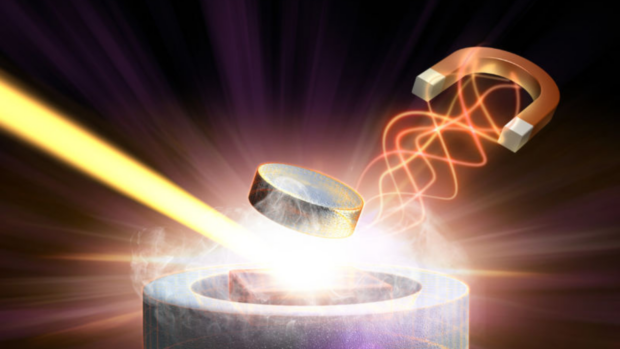Researchers from Emory University and Stanford University have made an exciting discovery in the field of superconductivity. They have identified a new form called oscillating superconductivity, which allows electrons to move through materials without losing much energy. What makes this even more intriguing is that it occurs at room temperature.
This breakthrough has sparked immense interest among scientists, particularly because it challenges the commonly believed notion that superconductivity can only occur at extremely low temperatures. While the claims regarding a material called LK-99 and its room-temperature superconductivity have been largely debunked, it has served as inspiration for further research in this area. Scientists believe that if they can harness and utilize this quality, it could lead to a major technological revolution.
To understand oscillating superconductivity, let’s look at the research conducted by Luiz Santos and his colleagues at Emory University. While investigating Van Hove singularities, which are structures that allow electronic states to converge and produce singularities, they stumbled upon the possibility of facilitating oscillating superconductivity. Santos explains that their goal is to predict and classify behavior in order to comprehend the workings of nature and explore its technological implications.
It is worth noting that high-temperature superconductors are capable of exhibiting this behavior, albeit in temperatures approximately three times colder than a household freezer. The discovery of superconductivity dates back to 1911 when Dutch physicist Heike Kamerlingh Onnes observed that mercury lost electrical resistance at a temperature of 4 Kelvin or -371 degrees Fahrenheit. Subsequently, in 1957, scientists uncovered the phenomenon of materials conducting electricity without energy loss at extremely low temperatures. The key lies in organizing electrons into a singular state that enables them to carry electric current in an efficient manner.
The potential impact of a room-temperature superconductor is significant. Currently, most devices we use rely on conductors with some resistance, limiting their energy efficiency. Additionally, these devices often require cooling systems to prevent overheating. However, if a room-temperature superconductor becomes a reality, we could eliminate the need for cooling systems in complex gadgets like gaming computers, thus pushing their performance limits. Furthermore, devices utilizing superconductors, such as MRI machines, could become more compact with the availability of room-temperature superconductors. This opens up possibilities for creating smaller and more accessible versions of these devices.
One notable example of superconductivity’s application can be found in magnetic levitation trains. By utilizing superconductivity, these trains are propelled forward by opposing magnetic fields between their platforms and rails. If a room-temperature superconductor is developed, these trains could operate more efficiently and endure extreme temperatures without affecting their magnetic properties.
In conclusion, the discovery of oscillating superconductivity by researchers from Emory University and Stanford University has the potential to revolutionize technology. While the possibility of room-temperature superconductivity still remains elusive, experts such as Luiz Santos and his team continue to strive towards this groundbreaking achievement. If successful, it would be a momentous advancement in the field of physics.
Denial of responsibility! VigourTimes is an automatic aggregator of Global media. In each content, the hyperlink to the primary source is specified. All trademarks belong to their rightful owners, and all materials to their authors. For any complaint, please reach us at – [email protected]. We will take necessary action within 24 hours.


